Distribution of Solar Radiation on Greenhouse Convex Rooftop
Abstract
:1. Introduction
2. Materials and Methods
2.1. North-South Oriented Greenhouse
2.1.1. Direct Beam Incident Radiation—South Side
2.1.2. Diffuse Irradiation
2.1.3. Solar Radiation on Greenhouse Rooftop—North Side
2.2. East-West Oriented Greenhouse
3. Monthly Incident Irradiation on Greenhouse Rooftop
4. Deployment of PV Modules on Greenhouse Rooftops
5. Discussion
6. Conclusions
Author Contributions
Funding
Conflicts of Interest
References
- Aroca-Delgado, R.; Perez-Alonso, J.; Callejon-Ferre, A.J.; Velazquez-Marti, B. Compatibility between crops and solar panels: An overview from shading systems. Sustainability 2010, 10, 743. [Google Scholar] [CrossRef] [Green Version]
- Li, G.; Tang, L.; Zhang, X.; Dong, J.; Xiao, M. Factors affecting greenhouse microclimate and its regulating’ techniques: A review. In Proceedings of the 8th International Conference on Environment Science and Engineering, (ICESE 2018), Barcelona, Spain, 11−13 March 2018. [Google Scholar] [CrossRef]
- Moretti, S.; Murucci, A. A photovoltaic greenhouse with variable shading for the optimization of agricultural and energy production. Energies 2019, 12, 2589. [Google Scholar] [CrossRef] [Green Version]
- Sethi, V.P. On the selection of shape and orientation of a greenhouse: Thermal modeling and experimental validation. Sol. Energy 2009, 83, 21–38. [Google Scholar] [CrossRef]
- Calantoni, A.; Monarca, D.; Murucci, A.; Cecchini, M.; Zambon, I.; Di Battista, F.; Maccario, D.; Saporito, M.G.; Beruto, M. Solar radiation distribution inside a greenhouse prototype with photovoltaic mobile plant and effects on flower growth. Sustainability 2018, 10, 855. [Google Scholar] [CrossRef] [Green Version]
- Kadowaki, M.; Yono, A.; Ishizu, F.; Tanaka, T.; Noda, S. Effect of greenhouse photovoltaic array on Welsh onion growth. Biosyst. Eng. 2012, 111, 290–297. [Google Scholar] [CrossRef]
- Yono, A.; Kadowaki, M.; Furue, A.; Tamaki, N.; Tanaka, T.; Hiraki, E.; Kato, Y.; Ishizu, F.; Noda, S. Shading and electrical features of a photovoltaic array mounted inside the roof of an east-west oriented greenhouse. Biosyst. Eng. 2010, 106, 367–377. [Google Scholar] [CrossRef]
- Cossu, M.; Ledda, L.; Urracci, G.; Sirigu, A.; Cossu, A.; Murgia, L.; Pazzona, A.; Yono, A. An algorithm for the calculation of the light distribution in photovoltaic greenhouse. Sol. Energy 2017, 141, 38–48. [Google Scholar] [CrossRef]
- Marucci, A.; Zambon, I.; Colantoni, A.; Monarca, D. A combination of agriculture and energy purpose: Evaluation of a prototype of photovoltaic greenhouse tunnel. Renew. Sustain. Energy Rev. 2018, 82, 1178–1186. [Google Scholar] [CrossRef]
- Abreu, A.C.; Marín, P.; Aguilera-Sáez, L.M.; Tristán, A.I.; Peña, A.; Oliveira, I.; Simões, M.; Valera, D.; Fernández, I. Effect of a Shading Mesh on the Metabolic, Nutritional, and Defense Profiles of Harvested Greenhouse-Grown Organic Tomato Fruits and Leaves Revealed by NMR Metabolomics. Agric. Food Chem. 2019, 67, 12972–12985. [Google Scholar] [CrossRef] [PubMed]
- Moreno-Teruel, M.A.; Valera, D.; Molina-Aiz, F.D.; López-Martínez, A.; Peña, A.; Marín, P.; Reyes-Rosas, A. Effects of Cover Whitening Concentrations on the Microclimate and on the Development and Yield of Tomato (Lycopersicon esculentum Mill.) Inside Mediterranean Greenhouses. Agronomy 2020, 10, 237. [Google Scholar] [CrossRef] [Green Version]
- Lopez, A.; Valera, D.L.; Molina-Aiz, F.D.; Peña, A. Sonic anemometry to evaluate airflow characteristics and temperature distribution in empty Mediterranean greenhouses quipped with pad-fan and fog systems. Biosyst. Eng. 2012, 113, 334–350. [Google Scholar] [CrossRef]
- López, A.; Valera, D.L.; Molina-Aiz, F.D.; Peña, A. Sonic anemometry measurements to determine airflow patterns in multi-tunnel greenhouse. Span. J. Agric. Res. 2012, 10, 631–642. [Google Scholar] [CrossRef] [Green Version]
- López-Martínez, A.; Molina-Aiz, F.D.; Valera-Martínez, D.L.; López-Martínez, J.; PeñaFernández, A.; Karlos, E.; Espinoza-Ramos, K.E. Application of Semi-Empirical Ventilation Models in A Mediterranean Greenhouse with Opposing Thermal and Wind Effects. Use of Non-Constant Cd (Pressure Drop Coefficient through the Vents) and Cw (Wind Effect Coefficient). Agronomy 2019, 9, 736. [Google Scholar] [CrossRef] [Green Version]
- Espinoza, K.; Lopez, A.; Valera, D.L.; Molina-Aiz, F.D.; Torres, J.A.; Peña, A. Effects of ventilator configuration on the flowpattern of a naturally-ventilated three-span Mediterranean greenhouse. Biosyst. Eng. 2017, 164, 13–30. [Google Scholar] [CrossRef]
- Appelbaun, J.; Crutchik, M.; Aronescu, A. Curved photovoltaic collector-convex surface. Sol. Energy 2020, 199, 832–836. [Google Scholar] [CrossRef]
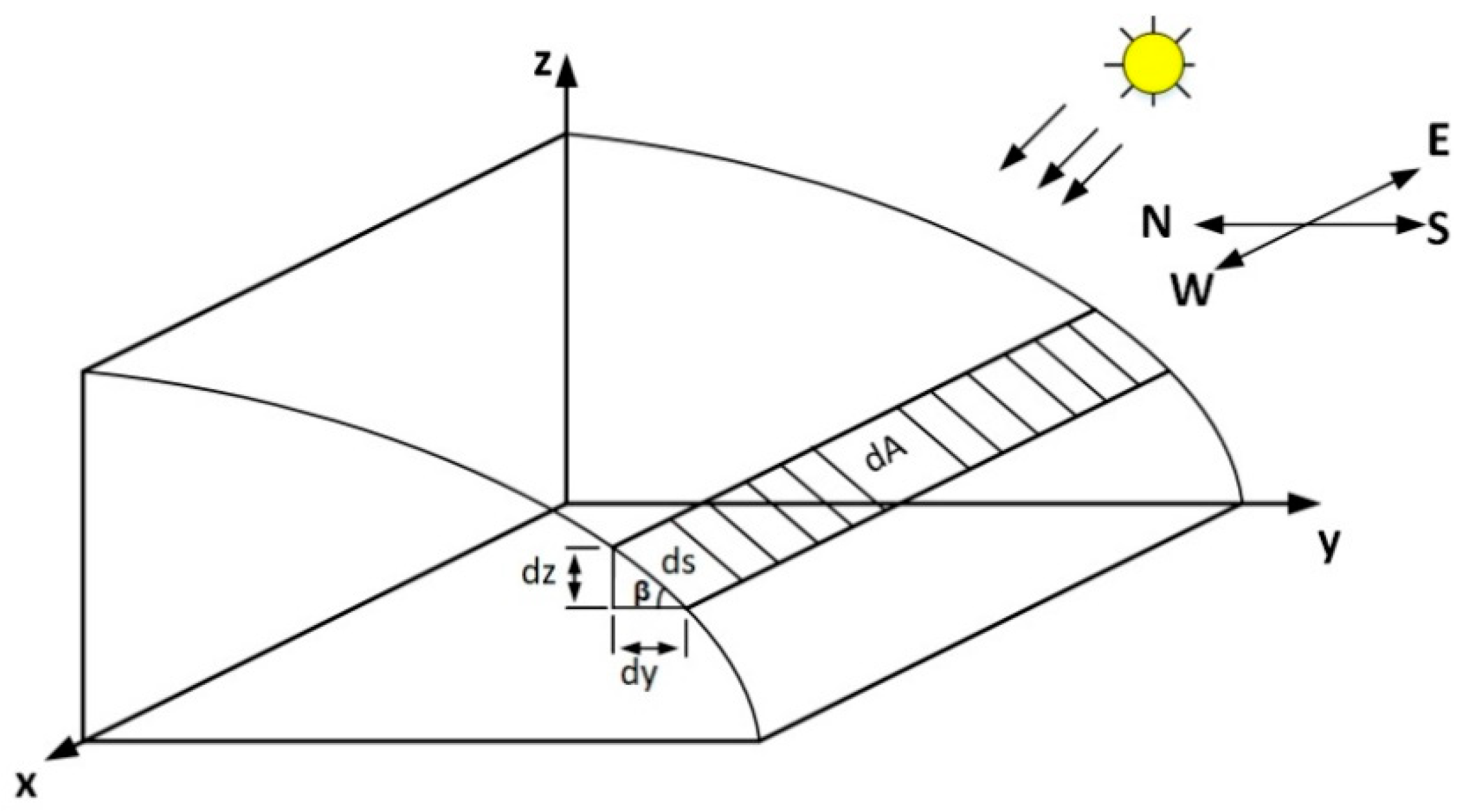
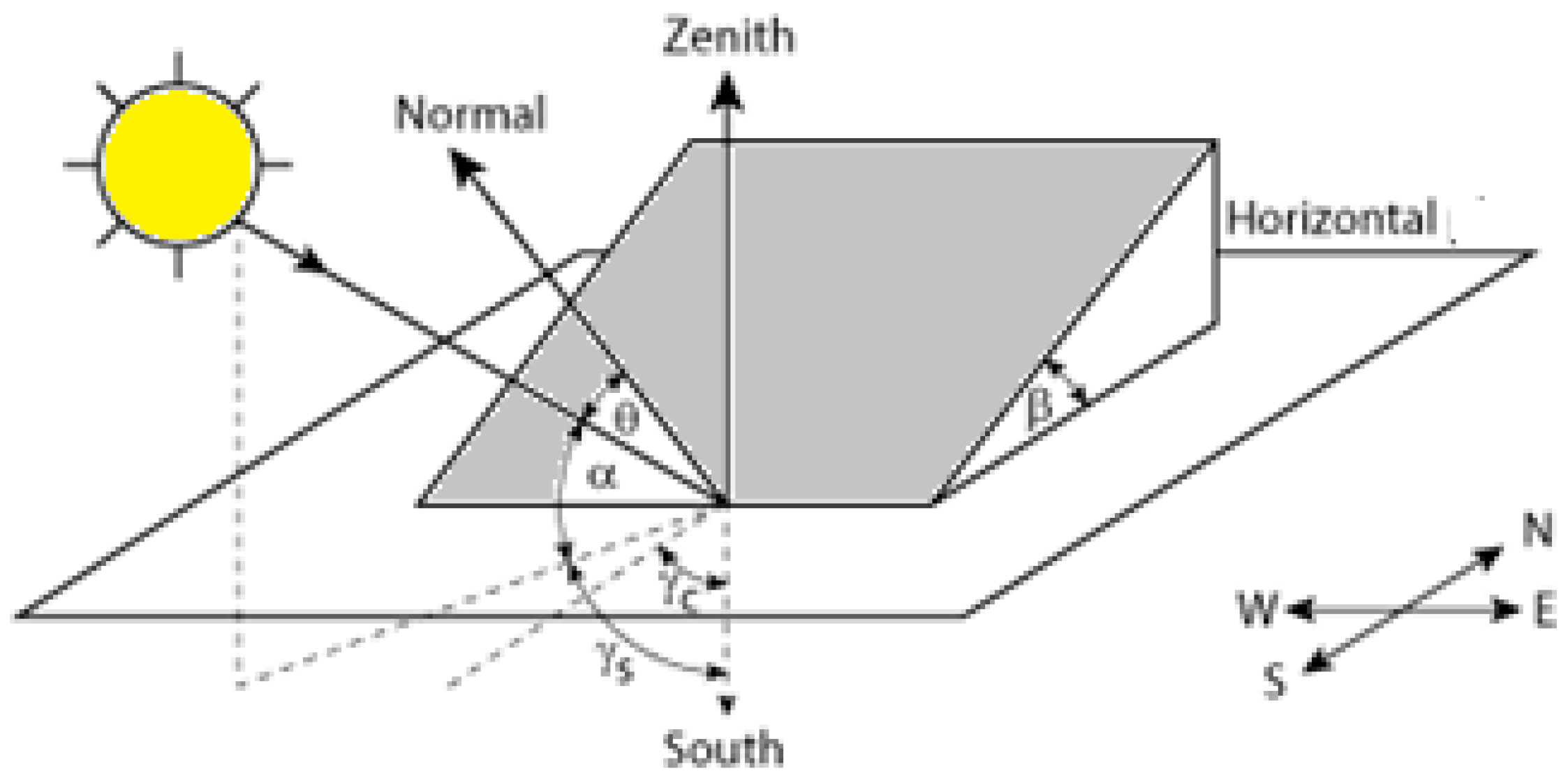

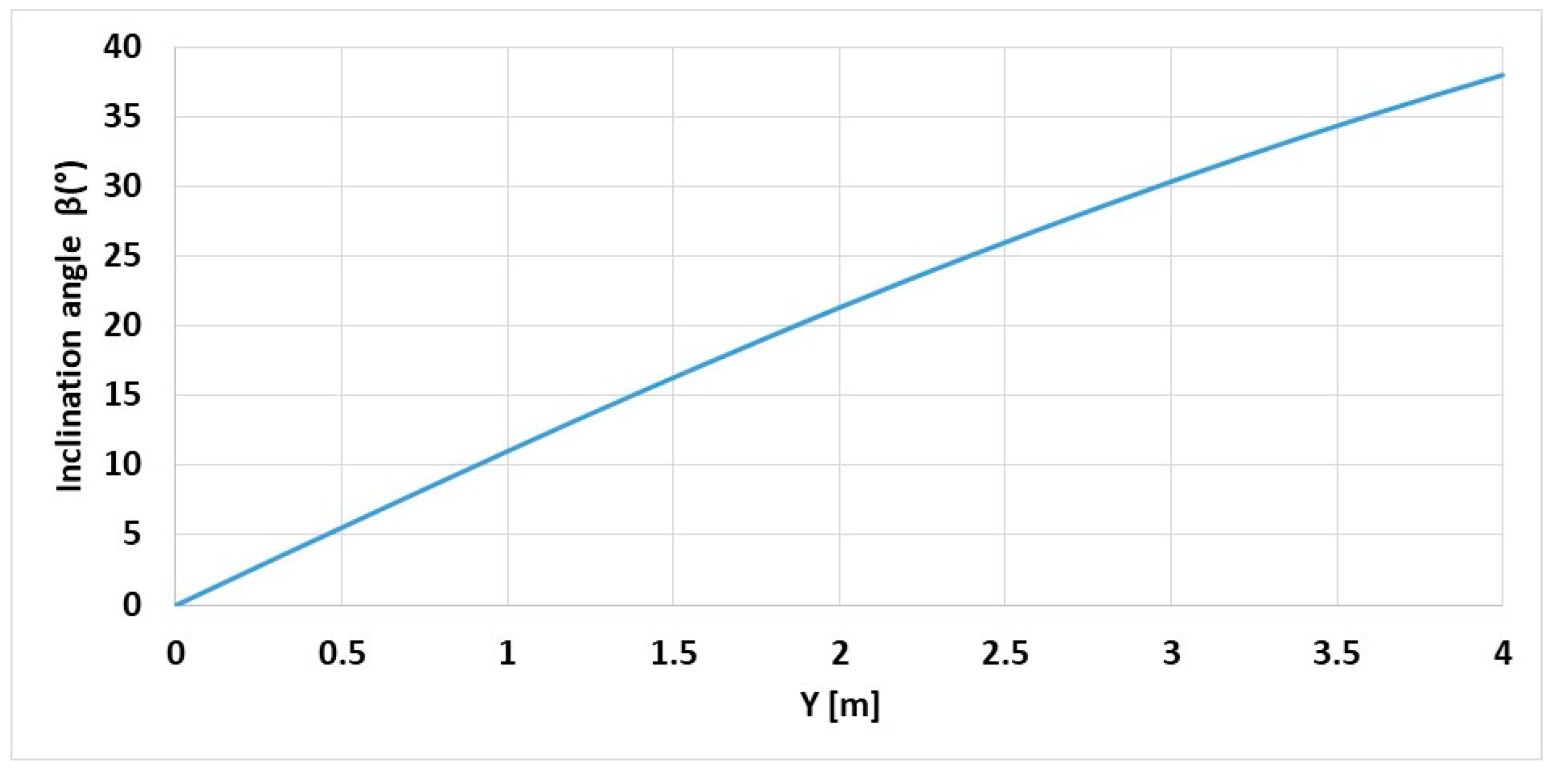
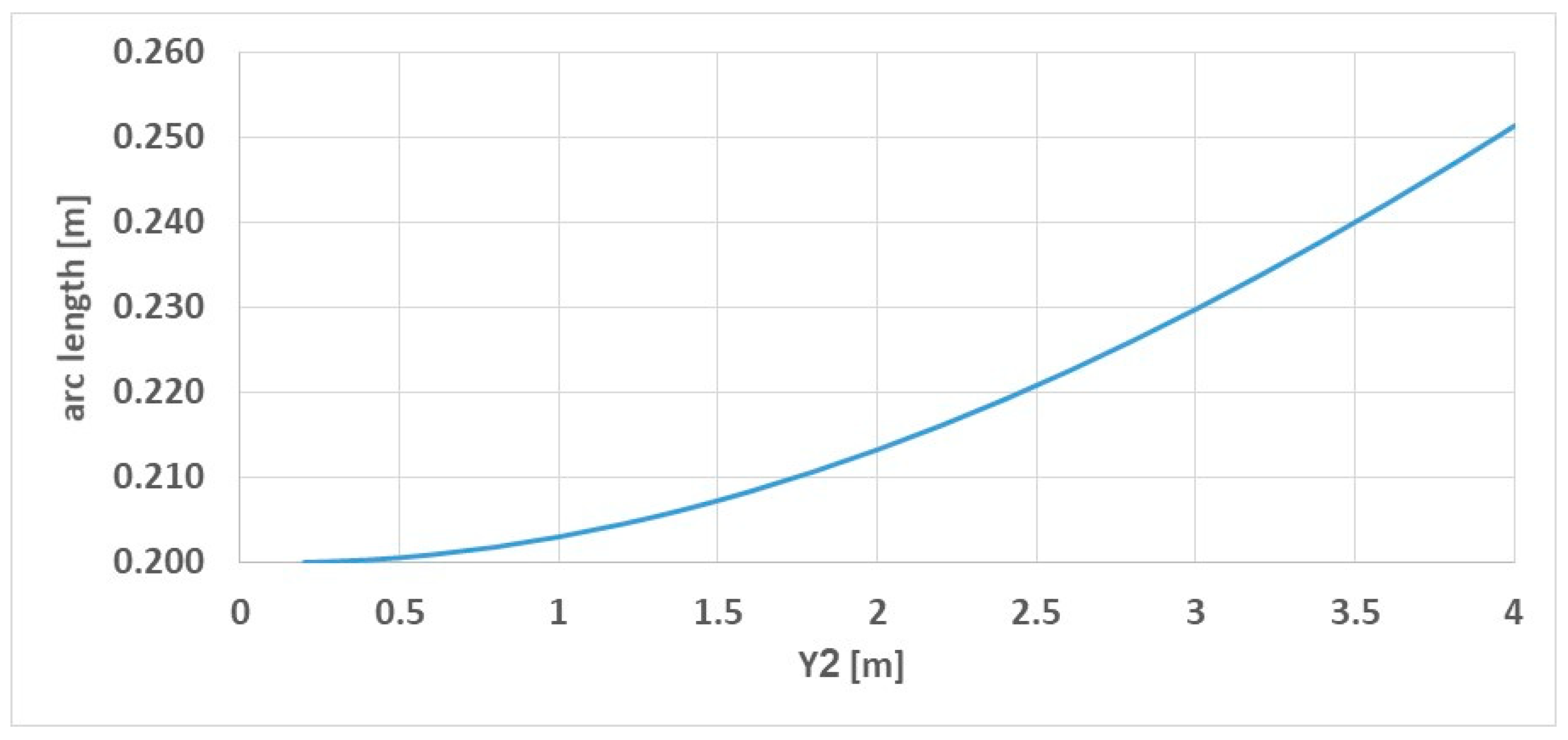
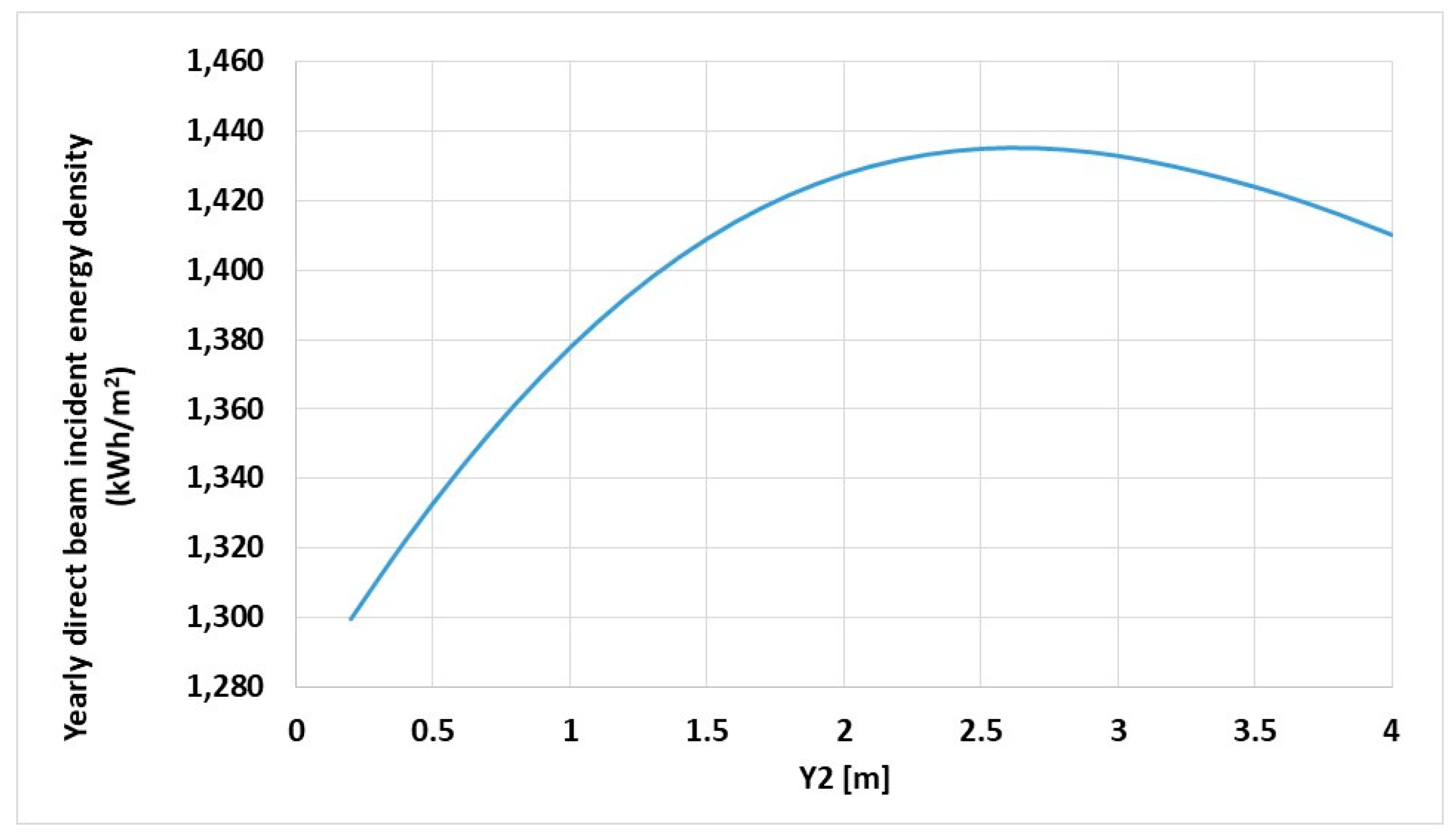

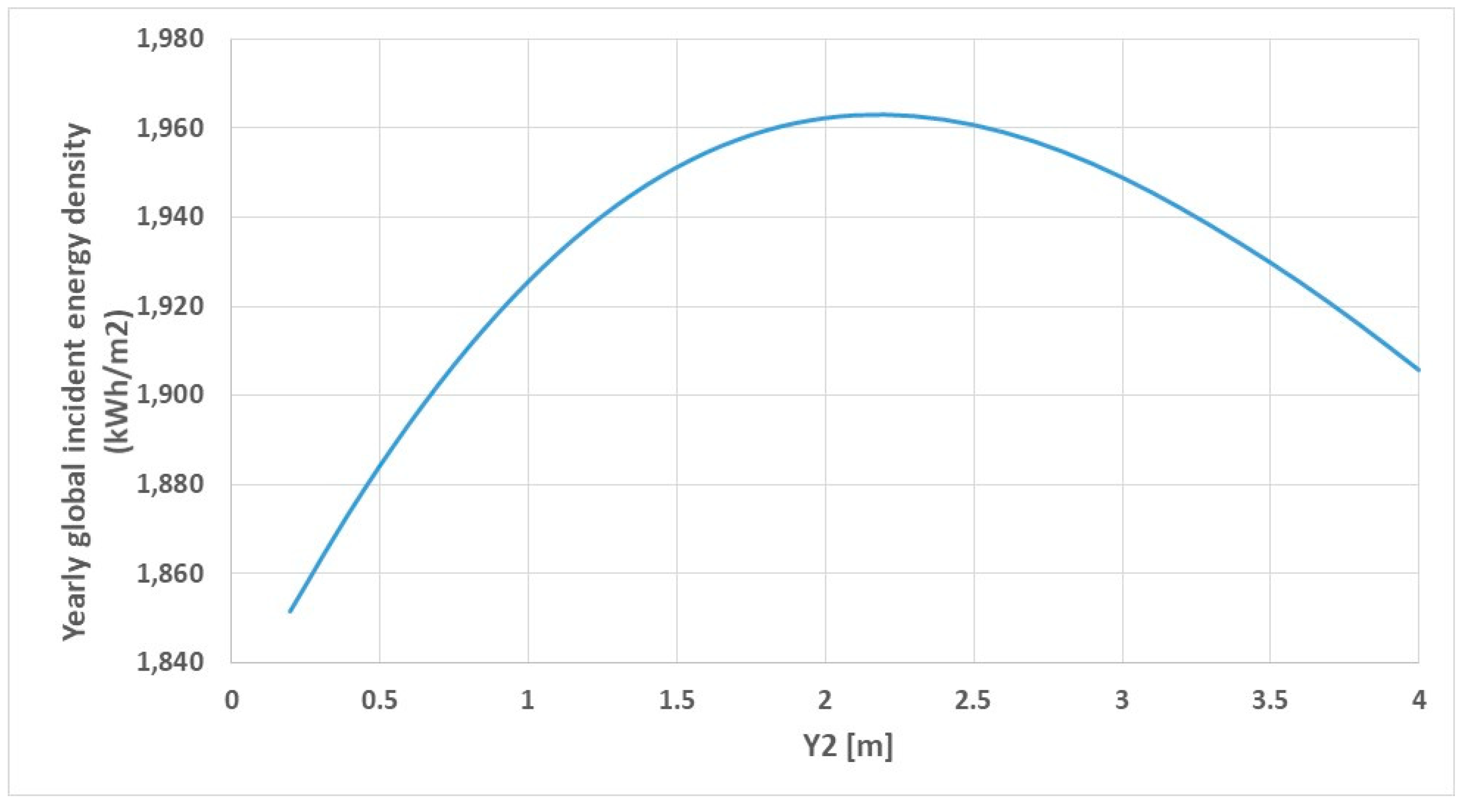
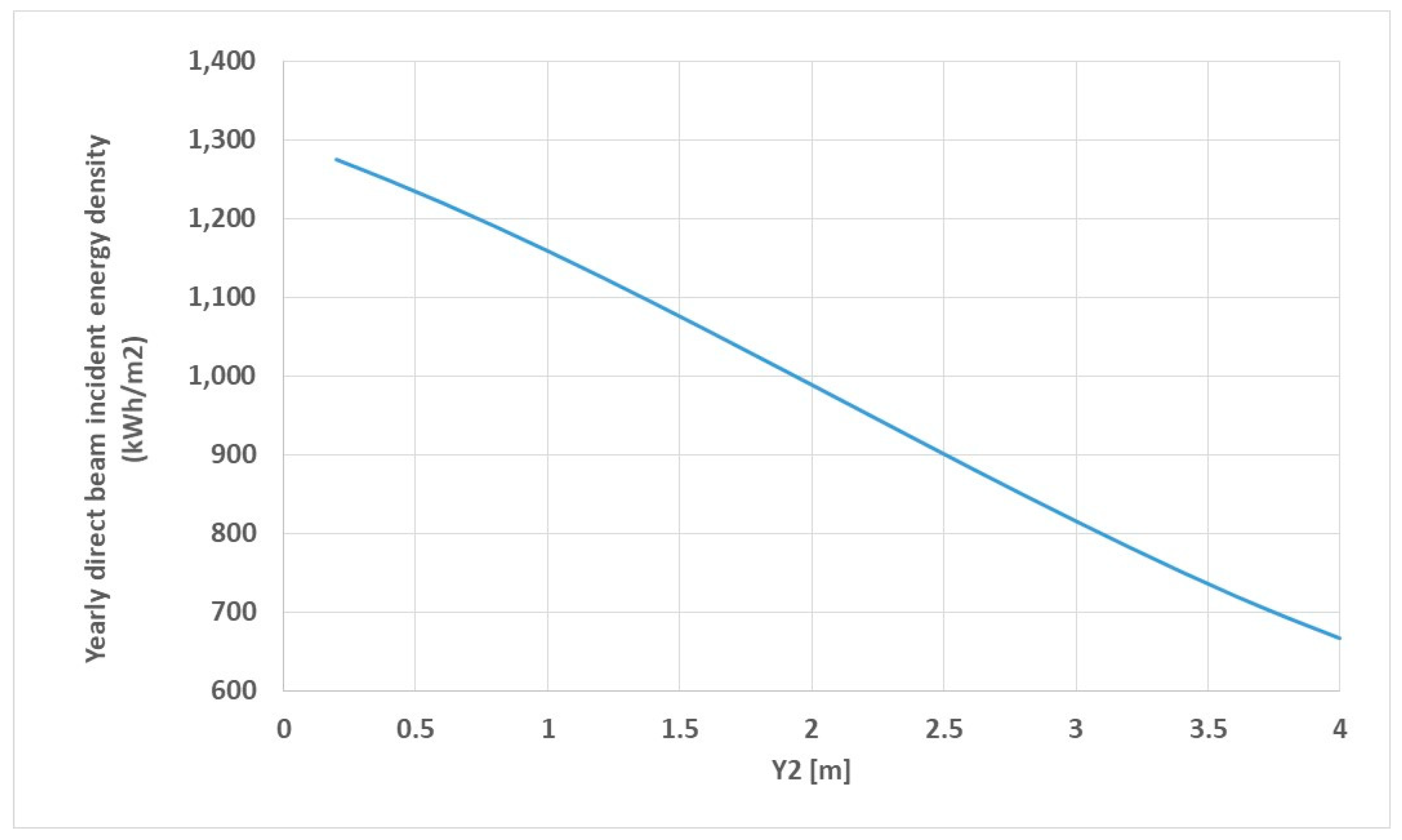
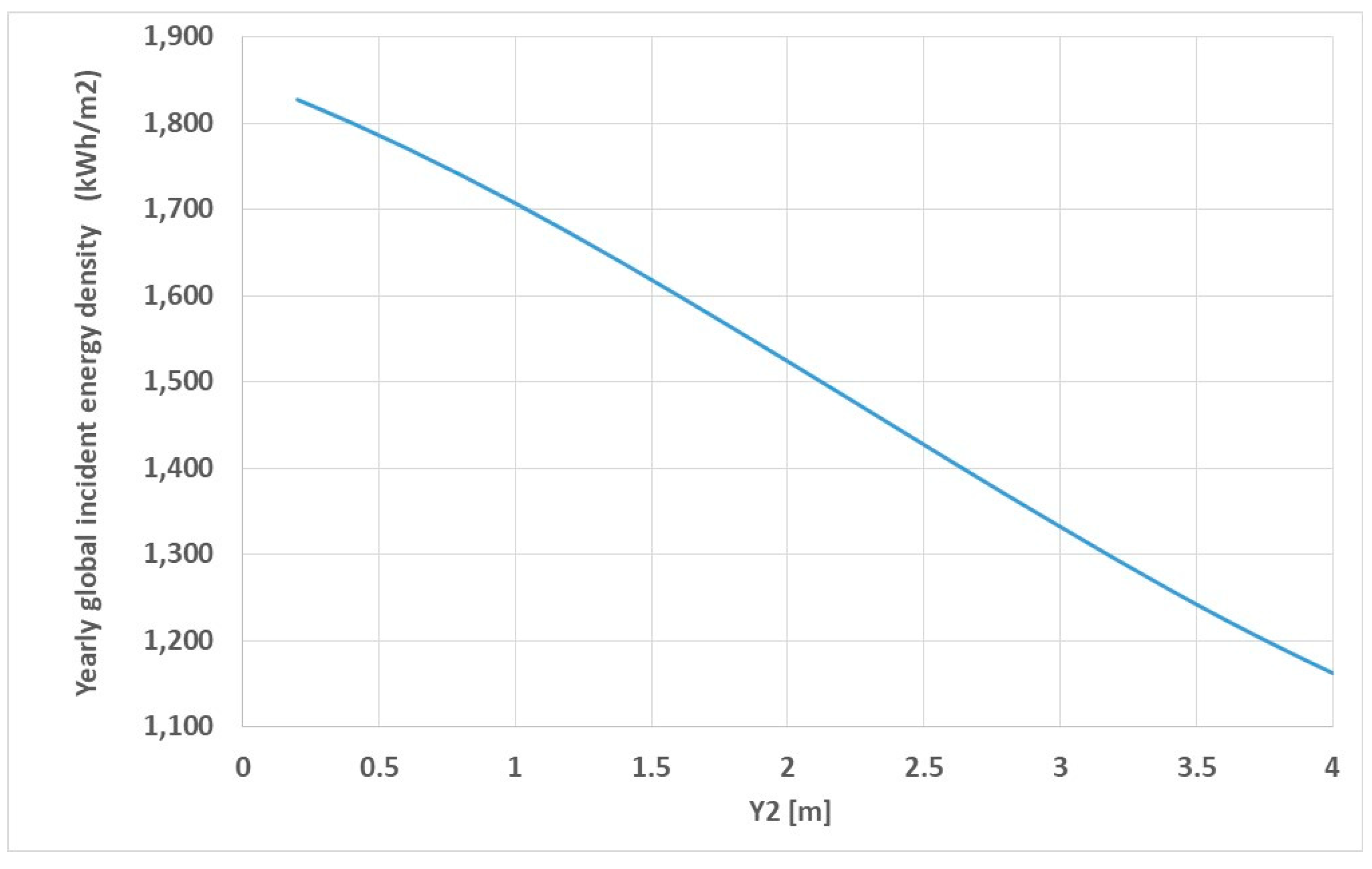




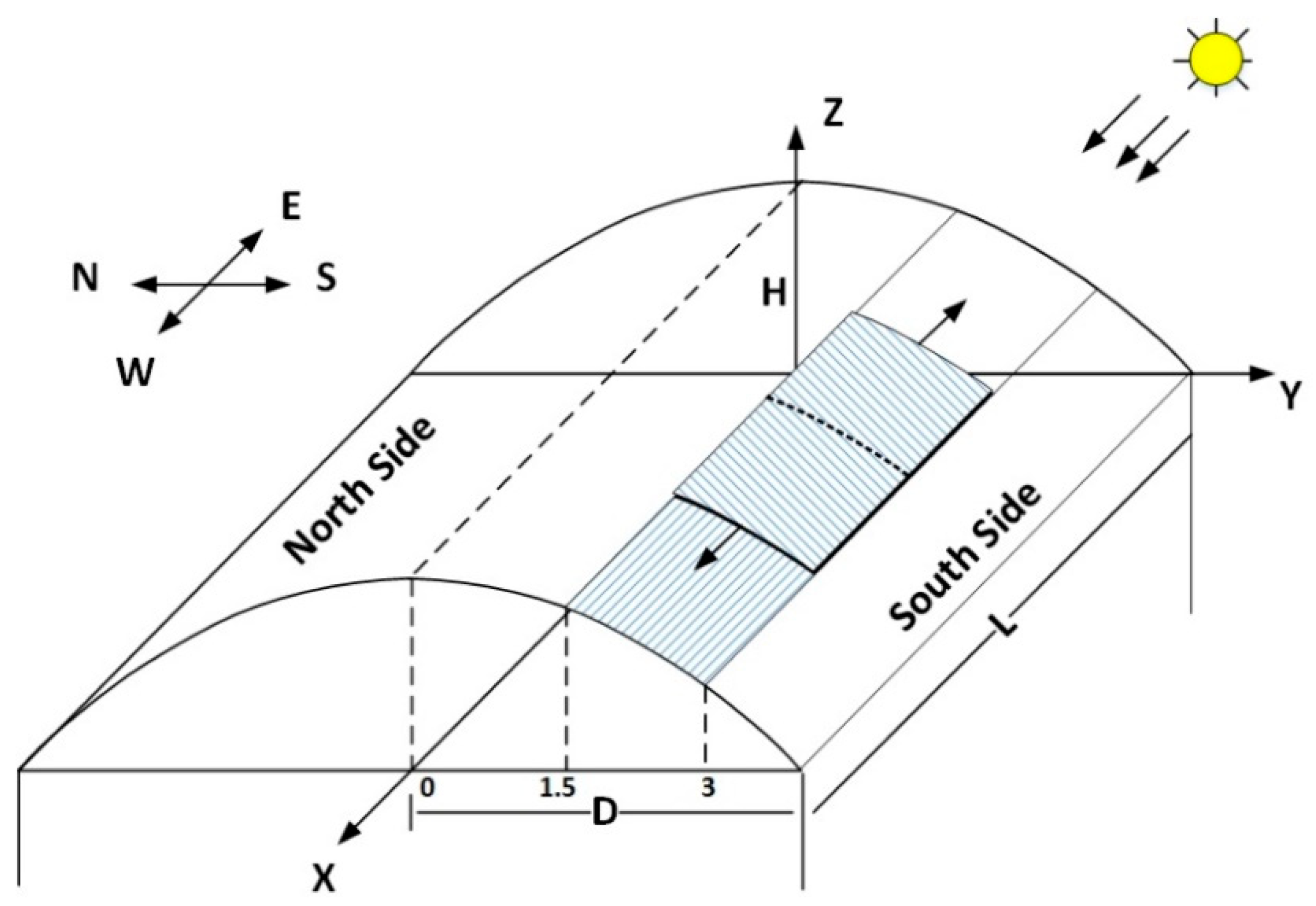
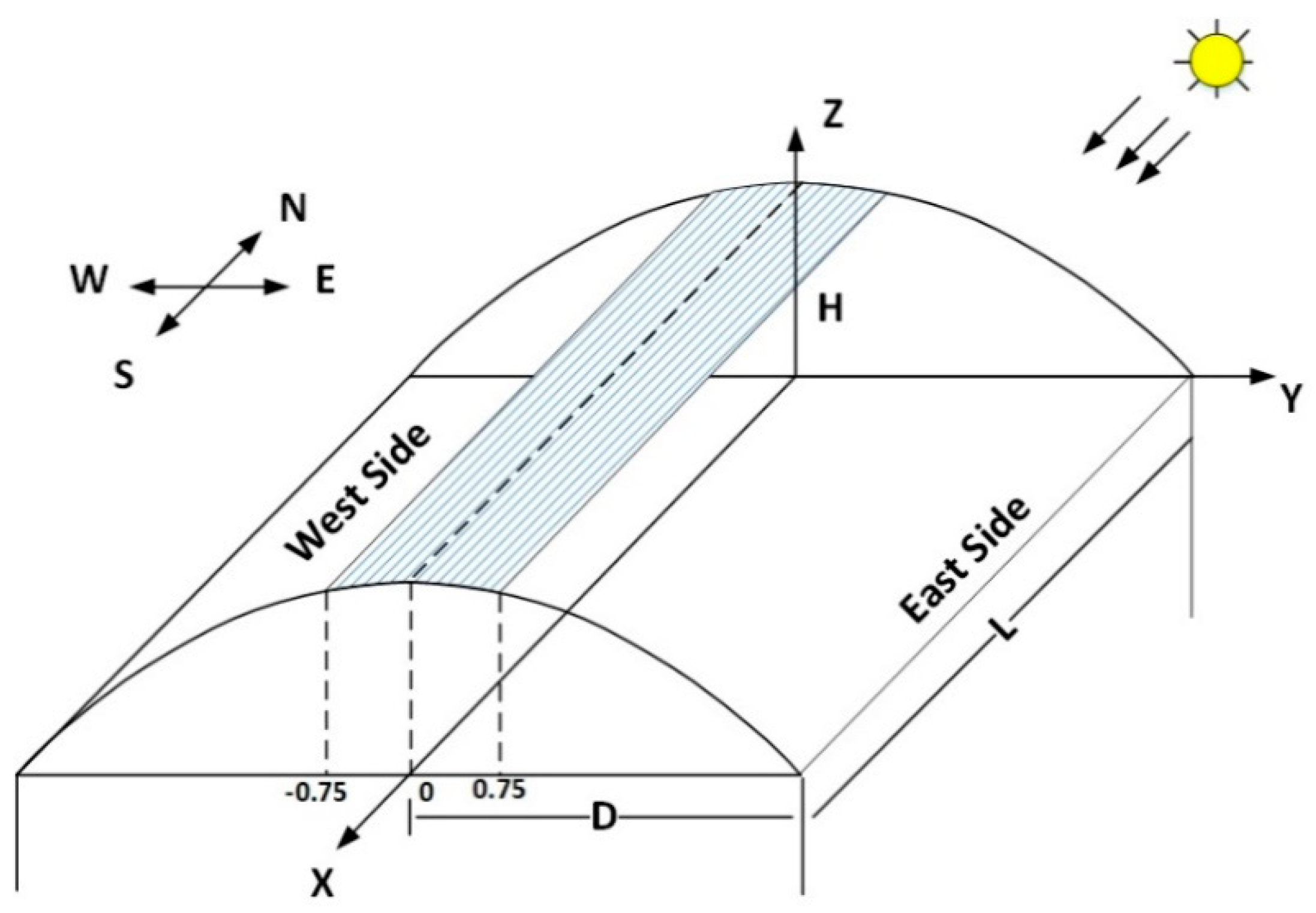
© 2020 by the authors. Licensee MDPI, Basel, Switzerland. This article is an open access article distributed under the terms and conditions of the Creative Commons Attribution (CC BY) license (http://creativecommons.org/licenses/by/4.0/).
Share and Cite
Appelbaum, J.; Aronescu, A. Distribution of Solar Radiation on Greenhouse Convex Rooftop. Sustainability 2020, 12, 7197. https://doi.org/10.3390/su12177197
Appelbaum J, Aronescu A. Distribution of Solar Radiation on Greenhouse Convex Rooftop. Sustainability. 2020; 12(17):7197. https://doi.org/10.3390/su12177197
Chicago/Turabian StyleAppelbaum, Joseph, and Avi Aronescu. 2020. "Distribution of Solar Radiation on Greenhouse Convex Rooftop" Sustainability 12, no. 17: 7197. https://doi.org/10.3390/su12177197




